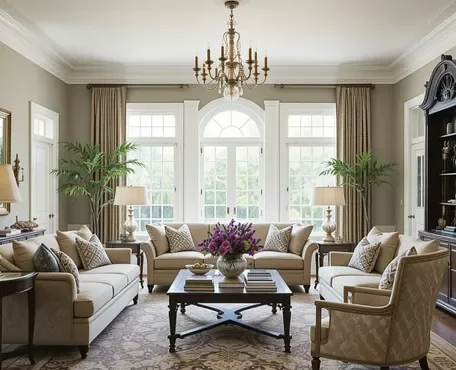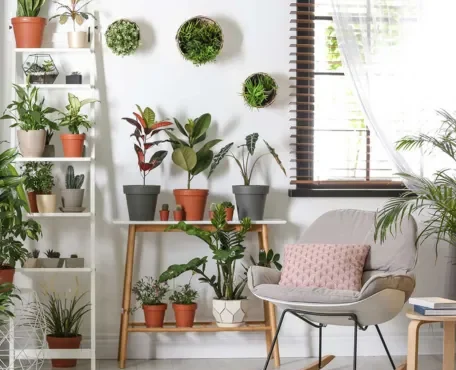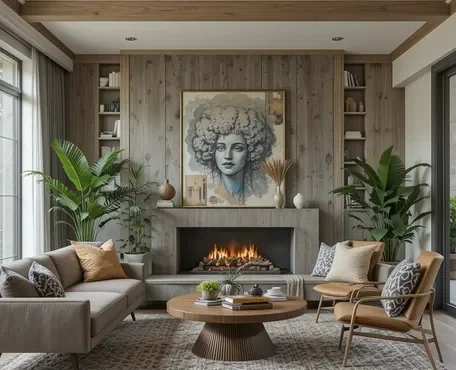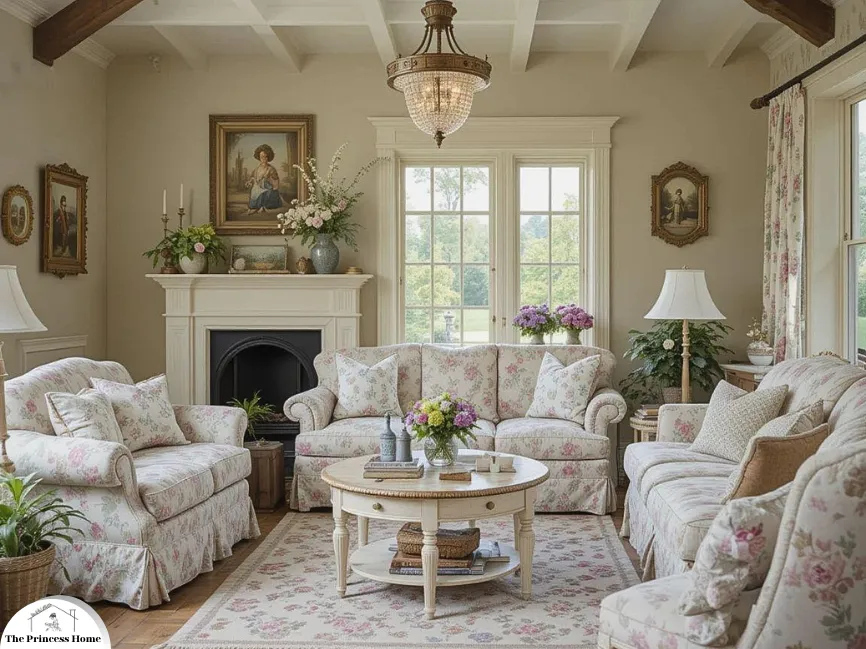
English Cottage Decor: A Timeless Journey into Cozy Elegance
English cottage decor, with its timeless charm and cozy elegance, evokes images of quaint countryside homes nestled amidst rolling green hills and blooming gardens. This style is characterized by a harmonious blend of rustic elements, floral patterns, and vintage furnishings, creating a welcoming and serene atmosphere. Whether you live in a bustling city or a rural setting, incorporating English cottage decor into your home can transform it into a haven of comfort and tranquility.
Here are some key elements to explore when infusing your home with this timeless style:
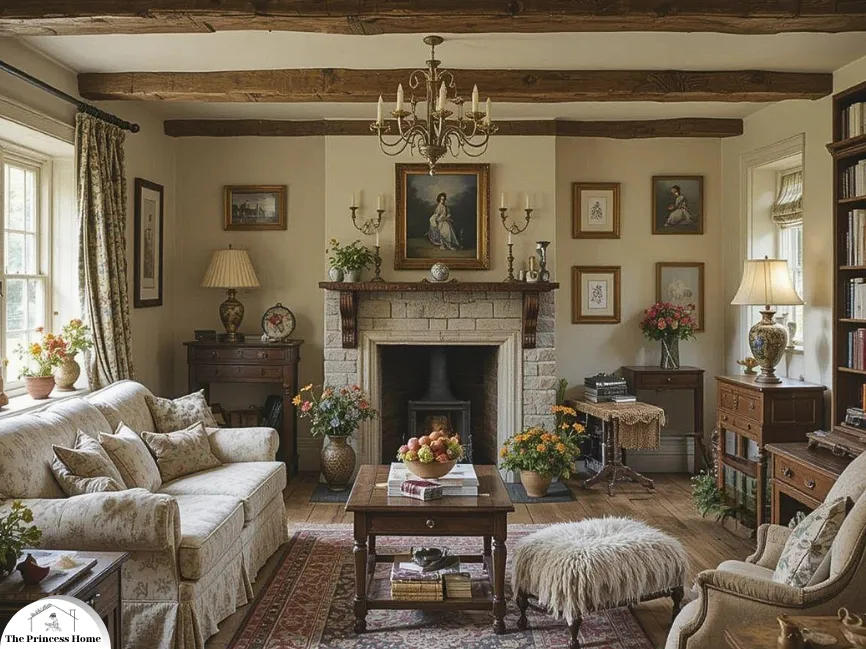
*Historical Roots in Rural England
English cottage decor finds its roots deeply embedded in the rural landscapes of England, dating back several centuries. This style emerged organically as a reflection of the lives and needs of the inhabitants of English cottages, which were often situated in the picturesque countryside.
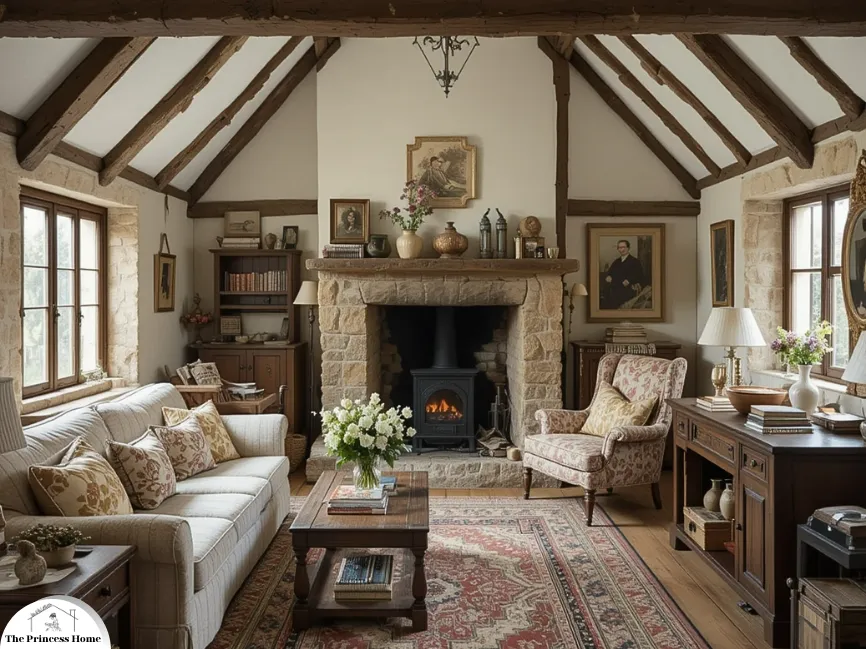
Medieval Beginnings
The origins of English cottage decor can be traced to medieval England, where cottages were simple, functional homes for peasants and laborers. These early cottages were constructed using locally available materials such as stone, timber, and thatch. The interiors were equally practical, with handmade furniture, rough-hewn wooden beams, and minimal ornamentation.
The primary focus was on functionality and comfort in a small, often cramped space. As centuries passed, English cottages began to reflect subtle changes influenced by social and economic developments:

1.16th to 17th Century:
During the Tudor period, cottages started to incorporate more refined features. The introduction of brickwork and glass windows signified a shift towards slightly more elaborate construction. Interiors saw the inclusion of better-crafted furniture and decorative items, though still maintaining a rustic charm.
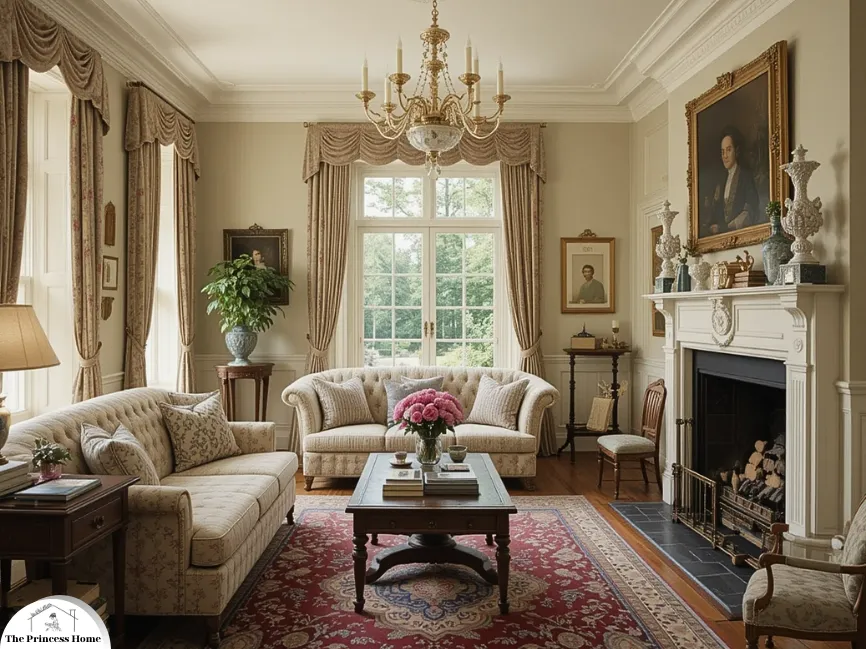
2.18th Century:
The Georgian era brought about a sense of formality and symmetry. While grand homes were built with classical influences, cottages maintained their quaint simplicity but began to adopt some elements of the prevailing architectural styles, such as sash windows and more structured gardens.
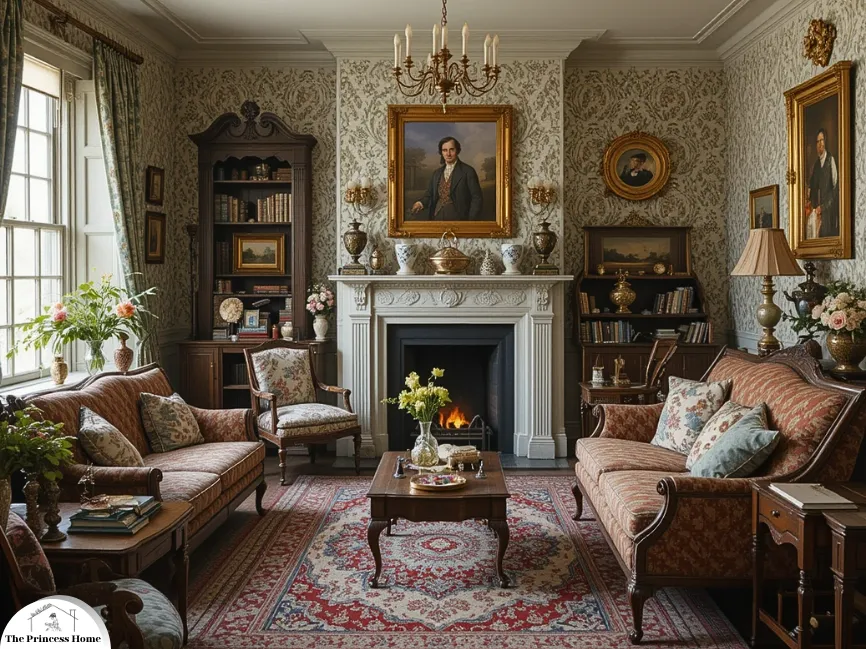
3.19th Century:
The Victorian era had a significant impact on English cottage decor. The Industrial Revolution made mass-produced goods more accessible, leading to the introduction of decorative items and furniture that were more ornate and elaborate. Despite these influences, the essence of cottage decor remained rooted in comfort and practicality, with an emphasis on creating a cozy home environment.

4.Arts &Crafts Movement
A pivotal moment in the development of English cottage decor was the Arts and Crafts Movement of the late 19th and early 20th centuries. This movement, led by figures such as William Morris, emphasized traditional craftsmanship, natural materials, and simple forms. It was a reaction against the industrialization and mass production of the time, advocating for a return to handcrafted, high-quality goods. The movement significantly influenced English cottage decor, reinforcing its connection to nature and artisanal craftsmanship.
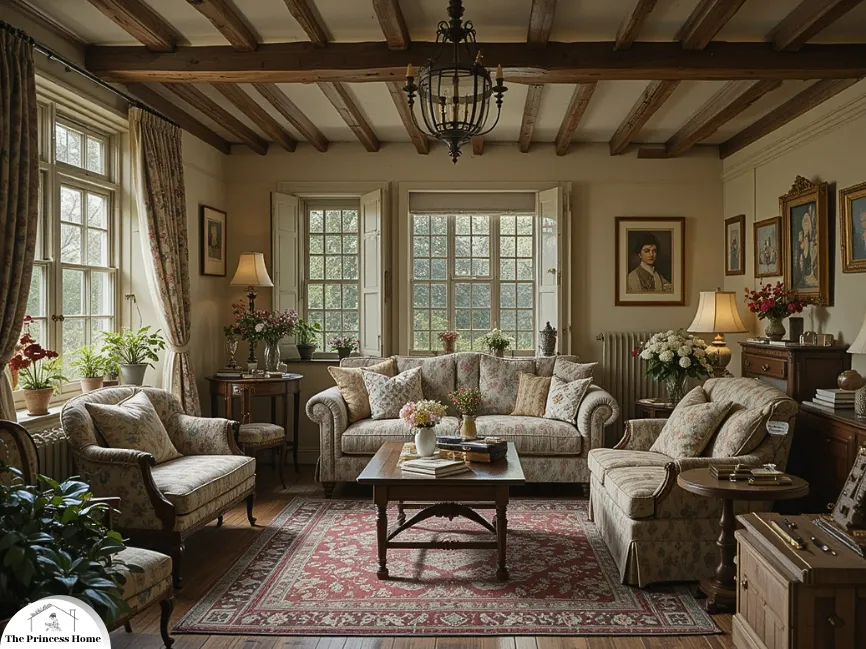
5.20th Century to Present
English cottage decor, rooted in rural England, has evolved over centuries while maintaining its charm, comfort, and connection to nature. Popularized in the 20th century for its nostalgic appeal, it blends traditional elements with modern conveniences. Its enduring allure lies in its ability to create cozy, welcoming spaces that feel timeless and adaptable.
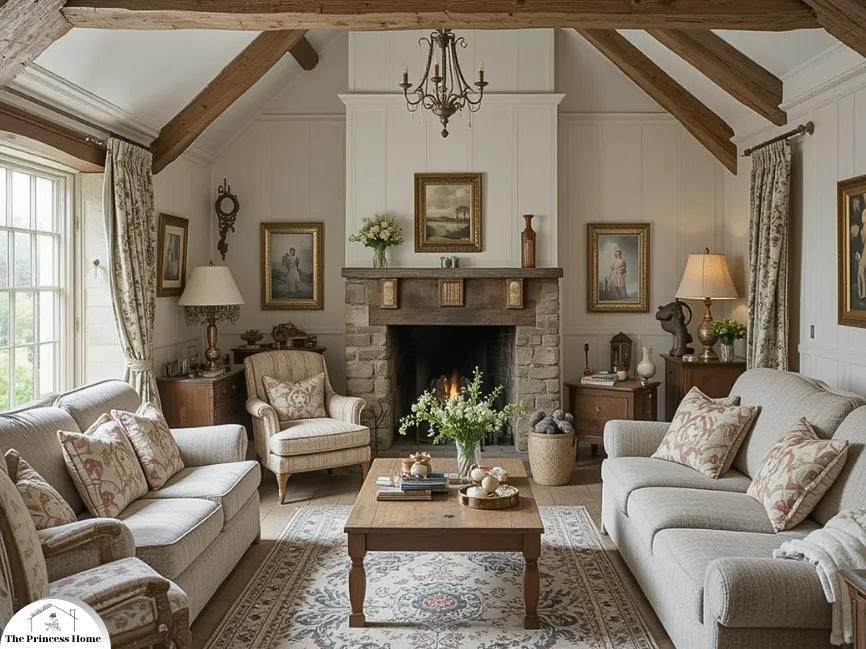
6.Historical Context &Evolution
The origins of English cottage decor can be traced back to the rural homes of England, where practicality and simplicity were paramount. These cottages were often built with local materials, such as stone and timber, and featured thatched roofs, exposed beams, and small, cozy rooms. The interior decor reflected the lifestyle of the inhabitants, with handmade furniture, heirloom pieces, and an abundance of textiles to add warmth.
Over the years, English cottage decor has evolved, blending traditional elements with modern influences. Despite these changes, the core principles of comfort, charm, and a connection to nature remain central to the style.
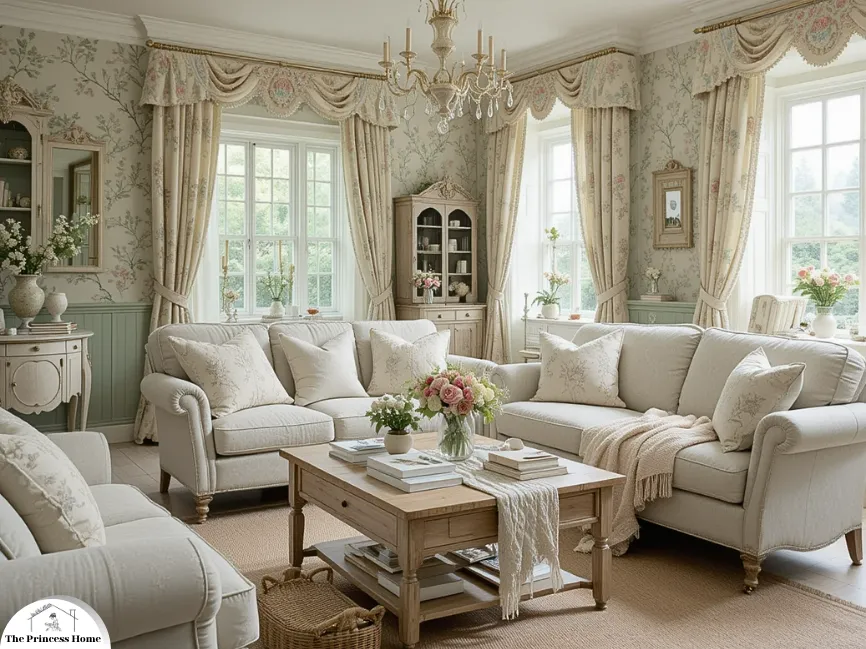
7.Key Elements of English Cottage Decor
English cottage decor is defined by its use of soft, nature-inspired colors such as sage green, pastel blues, creamy whites, and muted pinks, which create a serene and countryside-inspired atmosphere. Floral patterns are a staple, appearing on upholstery, curtains, and wallpapers, adding a whimsical and romantic touch to the space.
Vintage and rustic furnishings, including distressed wood furniture and antique finds, bring a sense of history and timelessness to the decor. Layered textiles, such as cozy throws, quilted blankets, and lace or embroidered fabrics, enhance the inviting and comfortable feel that is central to this style.
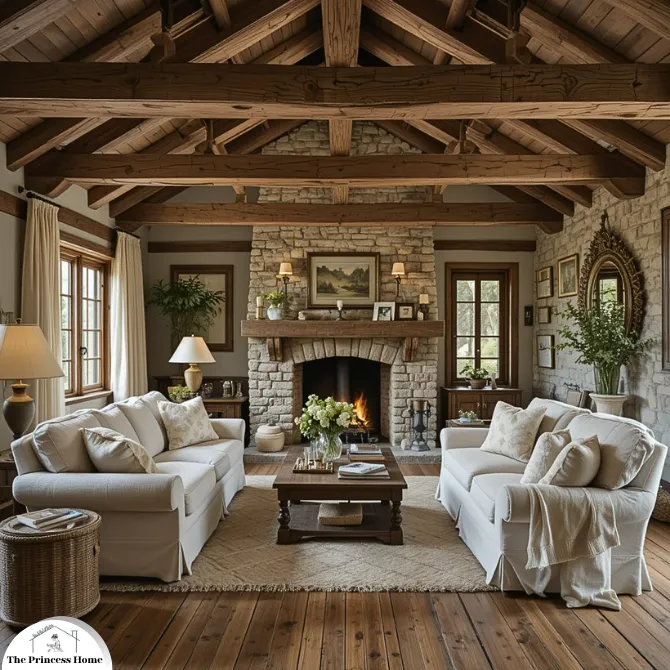
Natural Materials:
Exposed wooden beams, hardwood floors, and wooden furniture are staples of English cottage decor. These elements add warmth and a rustic touch to the space. Stone fireplaces and walls bring an earthy, grounding quality to the decor. Natural fibers like cotton, linen, and wool are used for curtains, upholstery, and throws, enhancing the cozy feel.
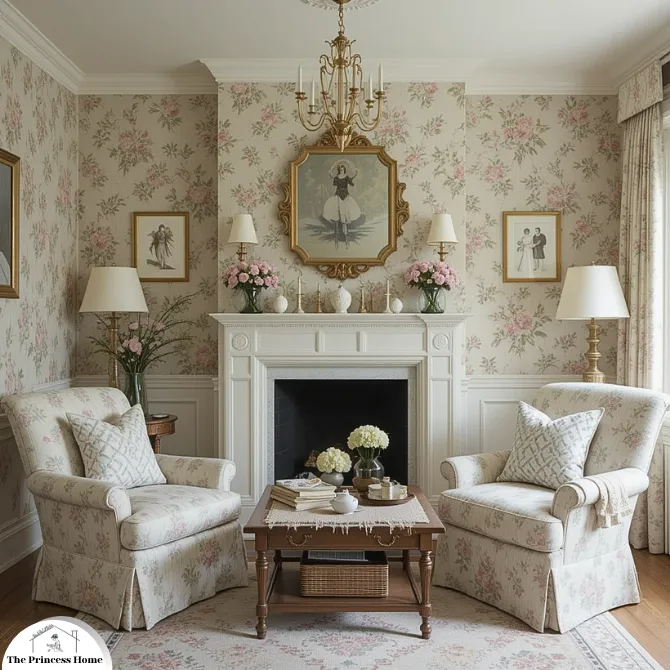
Floral Patterns &Prints:
Florals are a quintessential element of cottage decor. From wallpaper to upholstery, floral patterns bring a touch of nature indoors. These prints often feature soft, muted colors like pastels and earth tones, contributing to a serene atmosphere.
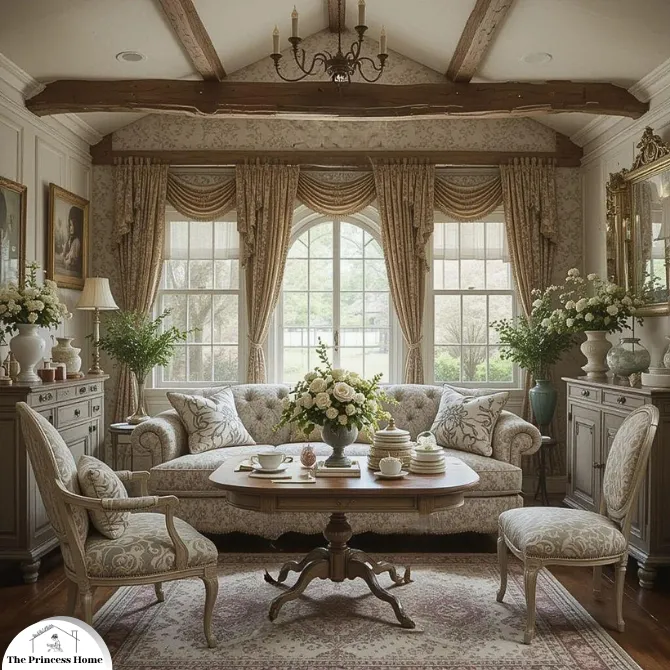
Vintage &Antique Furnishings:
Incorporating vintage and antique pieces is key to achieving an authentic English cottage look. These items add character and a sense of history to the space. Look for distressed finishes, ornate details, and classic shapes.
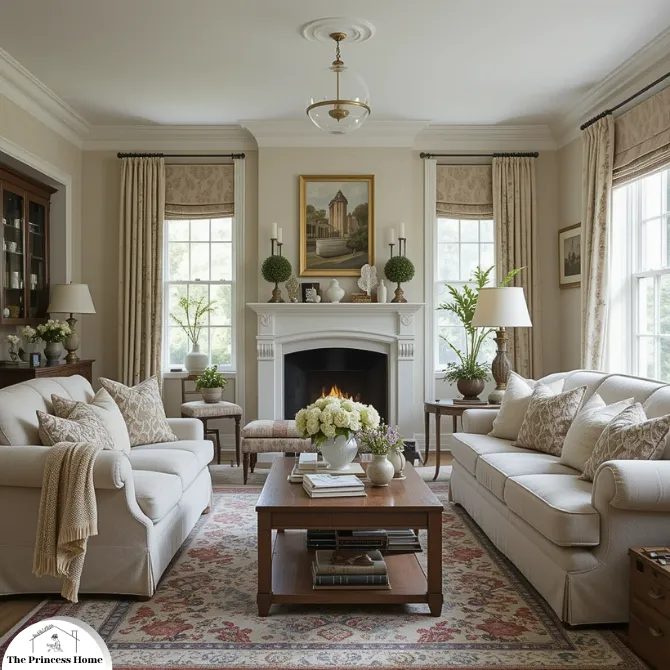
Cozy Textures &Layers:
Layering different textures is essential for creating a cozy and inviting environment. Pile up cushions and throws on sofas and chairs, use area rugs to define spaces, and add curtains or drapes to windows for an extra layer of warmth.

Muted &Natural Color Palette:
The color palette in English cottage decor is typically soft and understated. Whites, creams, and pastels dominate, often complemented by natural hues like greens, blues, and browns. These colors help create a calming and harmonious atmosphere.
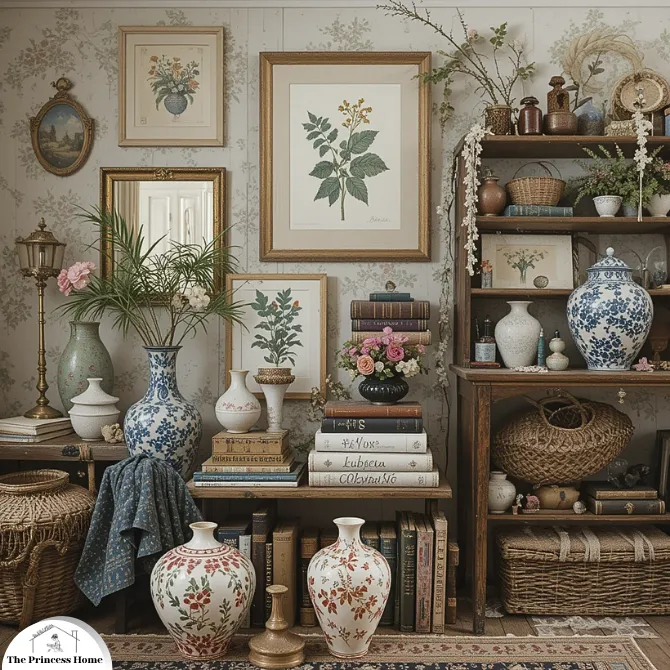
Eclectic Accessories:
Personal touches and eclectic accessories are vital in English cottage decor. Mix and match items like framed botanical prints, vintage books, ceramic vases, and woven baskets to create a lived-in, personalized space.
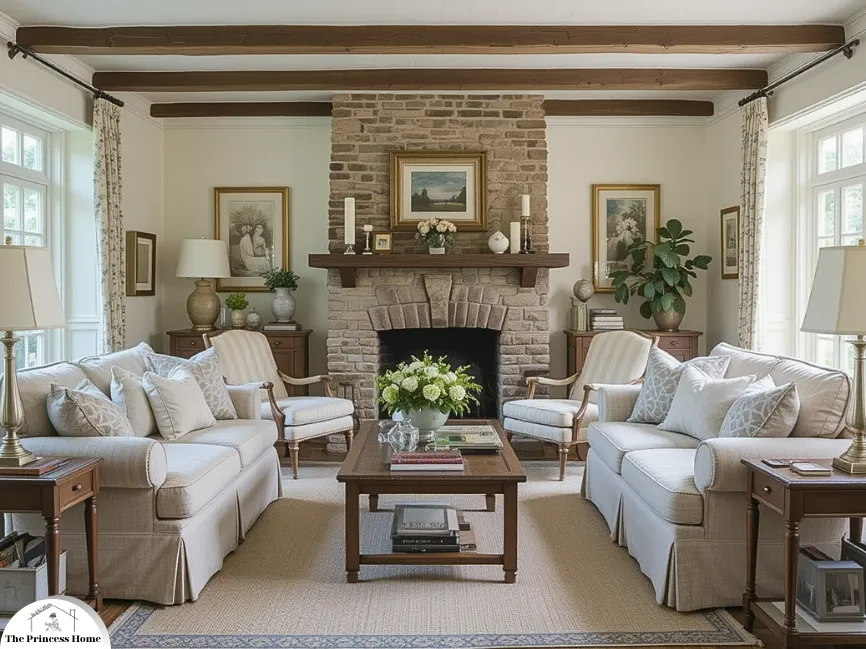
8.Decorating in English Cottage Style
Decorating rooms in English cottage style involves blending comfort, charm, and practicality with timeless design elements. In the living room, cozy seating arrangements with slipcovered sofas, vintage armchairs, and plush cushions create an inviting atmosphere. A stone or brick fireplace often serves as the focal point, adorned with a wooden mantel and decorative items like candlesticks or framed artwork.
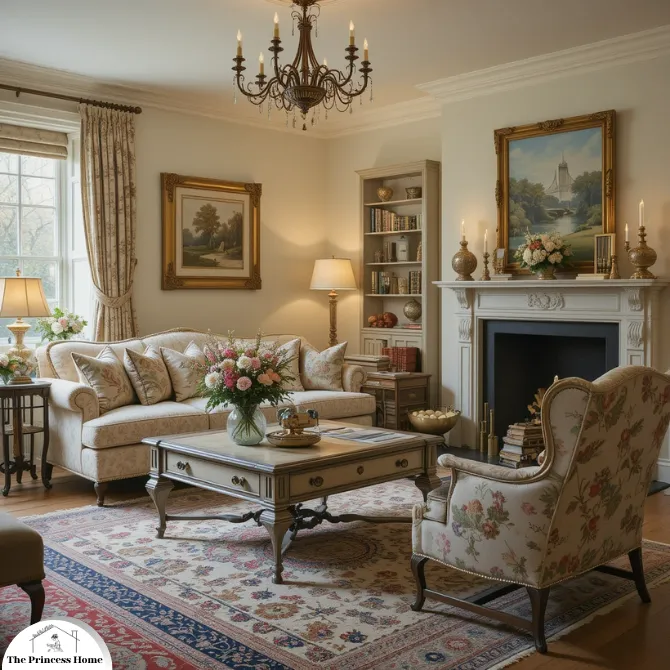
Living Room
The living room is the heart of the home, and in English decor, it should exude warmth and comfort. Start with a neutral color palette for the walls, perhaps a soft cream or pastel shade. Furnish the space with a comfortable sofa adorned with an array of floral and patterned cushions. A vintage coffee table, perhaps one with a distressed finish, can serve as a focal point.
Add an armchair upholstered in a floral fabric, and position it by a window or near a fireplace for a cozy reading nook. Layer the room with a mix of rugs, from woven to Persian styles, to add depth and texture. Don’t forget to include a mix of lighting sources, such as table lamps, floor lamps, and candles, to create a warm, inviting glow.
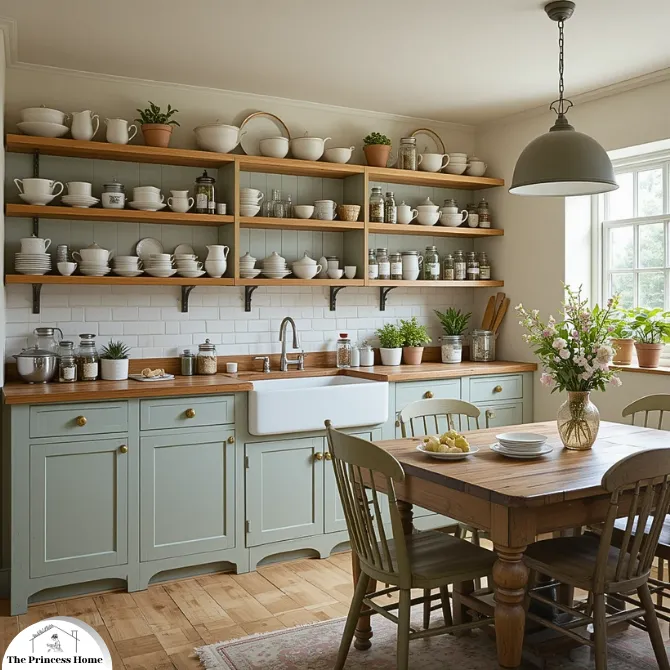
Kitchen
The kitchen in an English cottage-style home should be both functional and charming. Open shelving is a popular choice, allowing you to display beautiful dishware, vintage teacups, and jars filled with pantry staples. Opt for a farmhouse sink and a wooden or stone countertop to enhance the rustic feel.
Paint the cabinets in a soft, muted color, like sage green or duck egg blue, and choose brass or ceramic knobs for an antique touch. A wooden dining table with mismatched chairs can create a welcoming dining area. Complete the look with a collection of fresh herbs in pots on the windowsill and a vase of fresh flowers on the table.
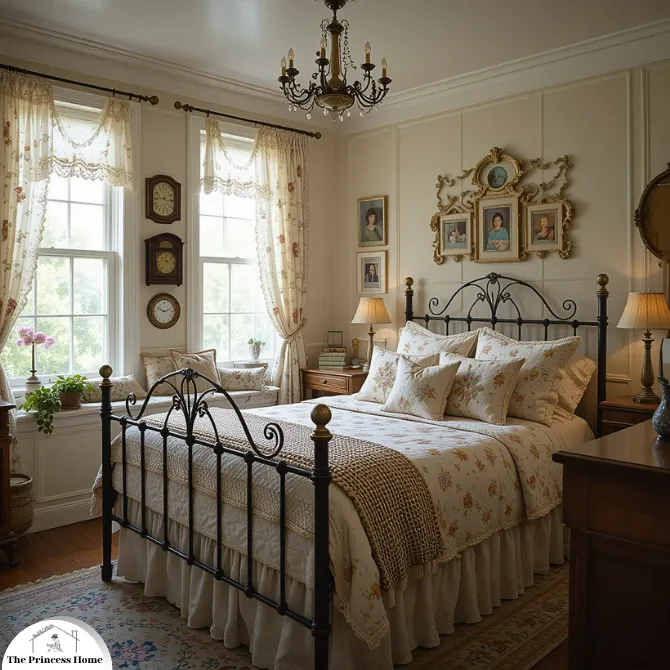
Bedroom
In the bedroom, comfort is key. Start with a wrought iron or wooden bed frame, and dress it with layers of soft, floral bedding. A quilt or a knitted throw at the foot of the bed adds an extra layer of coziness. Bedside tables can be vintage finds, with mismatched lamps for a touch of whimsy.
A wooden dresser, perhaps with a distressed finish, can provide storage while adding to the rustic charm. Hang lace curtains or floral drapes to soften the windows, and consider adding a cushioned window seat if space allows. Personal touches like framed family photos, a vintage clock, and a collection of well-loved books complete the look.
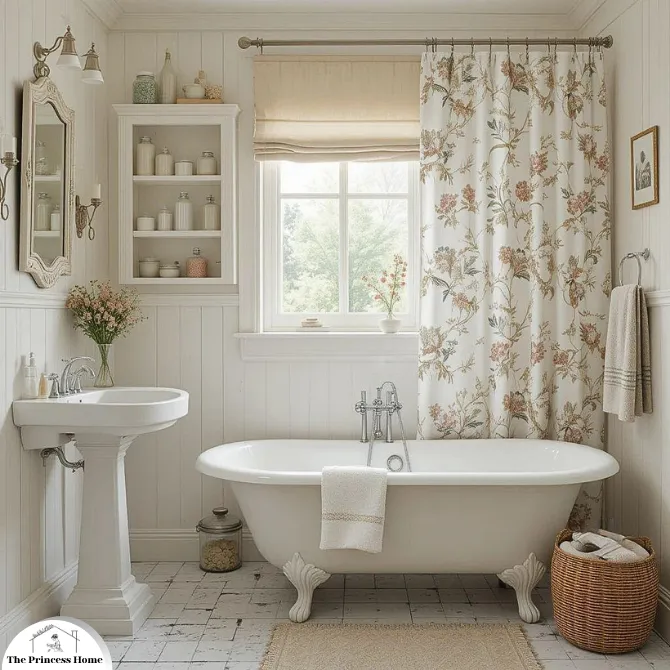
Bathroom
Transform your bathroom into a serene retreat with English cottage decor. Choose classic fixtures like a pedestal sink and a clawfoot tub. Subway tiles or beadboard walls painted in a soft, neutral shade can enhance the vintage feel.
Incorporate open shelving or a vintage cabinet to store toiletries, and display them in pretty glass jars or ceramic containers. Soft, fluffy towels in neutral tones and a floral shower curtain can add to the cozy ambiance. Finish the space with a woven basket for laundry and a vase of fresh or dried flowers.
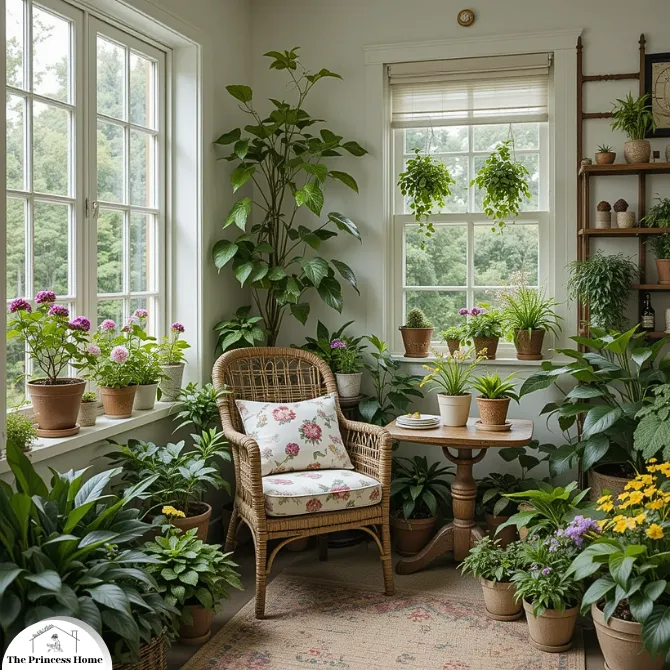
Bringing the Outdoors In
One of the hallmarks of English cottage decor is its seamless connection to nature. This can be achieved through the use of natural materials, floral patterns, and plenty of greenery. Indoor plants, fresh flowers, and even small potted trees can bring a touch of the garden inside. Consider creating a garden-inspired nook with a collection of potted plants, a comfortable chair, and a small table for your morning tea or coffee.
Conclusion
English cottage decor is more than just a style; it’s a way of creating a home that feels warm, welcoming, and timeless. By embracing natural materials, floral patterns, vintage furnishings, and cozy layers, you can transform any space into a charming retreat that exudes the charm of the English countryside. Whether you’re looking to redecorate a single room or your entire home, the principles of English cottage decor offer endless possibilities for creating a space that is both beautiful and comfortable.
Frequently Asked Questions About English Cottage Decor
1. What are the key features of English cottage decor?
Answer: Key features of English cottage decor include the use of natural materials like wood and stone, floral patterns and prints, vintage and antique furnishings, cozy textures and layers, a muted and natural color palette, and eclectic accessories. These elements combine to create a warm, inviting, and charming atmosphere reminiscent of the English countryside.
2. How can I incorporate English cottage decor into a small space?
Answer: To incorporate English cottage decor into a small space, focus on creating a cozy and clutter-free environment. Use light, neutral colors to make the space feel larger, and incorporate mirrors to reflect light. Opt for multifunctional furniture, such as a storage ottoman or a fold-out table. Embrace vertical space with open shelving and add layers of textiles, like cushions and throws, to create a cozy atmosphere without overwhelming the room.
3. What colors are commonly used in English cottage decor?
Answer: English cottage decor typically features a soft and understated color palette. Common colors include whites, creams, pastels (such as soft pinks, blues, and greens), and natural hues like sage green, duck egg blue, and earthy browns. These colors help create a calming and harmonious environment.
4. How can I achieve an authentic vintage look in English cottage decor?
Answer: To achieve an authentic vintage look, incorporate antique or vintage-inspired furniture and accessories. Look for pieces with distressed finishes, ornate details, and classic shapes. Visit flea markets, antique shops, and thrift stores for unique finds. Additionally, mix and match different items to create a collected-over-time appearance, and use vintage fabrics, such as lace or floral prints, for upholstery and curtains.
5. What types of patterns are popular in English cottage decor?
Answer: Floral patterns are quintessential in English cottage decor. These can be found on wallpaper, upholstery, curtains, and bedding. Other popular patterns include checks, stripes, and toile. Mixing different patterns is common, but it’s important to keep the color palette cohesive to avoid a cluttered look.
6. How can I incorporate modern elements into English cottage decor without losing its charm?
Answer: To incorporate modern elements while maintaining the charm of English cottage decor, choose contemporary pieces that complement the existing style. For example, opt for sleek lighting fixtures with a vintage twist, or add modern art with a floral or nature theme. Keep the color palette consistent with traditional English cottage hues and blend new items seamlessly with vintage furnishings and decor.
7. What kind of textiles should I use in English cottage decor?
Answer: Textiles play a crucial role in English cottage decor, adding warmth and comfort. Use natural fibers like cotton, linen, and wool. Floral fabrics are a must, whether on cushions, curtains, or bedding. Quilts, knitted throws, and embroidered linens also contribute to the cozy, layered look. Mix different textures and patterns to create a rich and inviting environment.
8. How can I decorate my kitchen in English cottage style?
Answer: To decorate your kitchen in English cottage style, focus on creating a functional yet charming space. Use open shelving to display beautiful dishware and vintage accessories. Choose a farmhouse sink and wooden or stone countertops. Paint cabinets in soft, muted colors like sage green or duck egg blue, and use brass or ceramic knobs. Incorporate a wooden dining table with mismatched chairs and add fresh herbs in pots on the windowsill. Floral curtains and a vase of fresh flowers can complete the look.
9. Can I mix English cottage decor with other styles?
Answer: Yes, English cottage decor can be blended with other styles to create a unique and personalized look. For example, you can mix it with modern elements for a contemporary twist or incorporate rustic features for a farmhouse feel. The key is to maintain a cohesive color palette and select pieces that complement each other, ensuring a harmonious and balanced space.
10. How do I choose the right accessories for English cottage decor?
Answer: When choosing accessories for English cottage decor, look for items that add character and charm. Consider vintage or antique pieces like ceramic vases, woven baskets, framed botanical prints, and vintage books. Personal touches, such as family heirlooms or handmade items, also enhance the cozy, lived-in feel. Mix and match different accessories to create an eclectic yet cohesive look, ensuring they complement the overall color scheme and style of the space.



